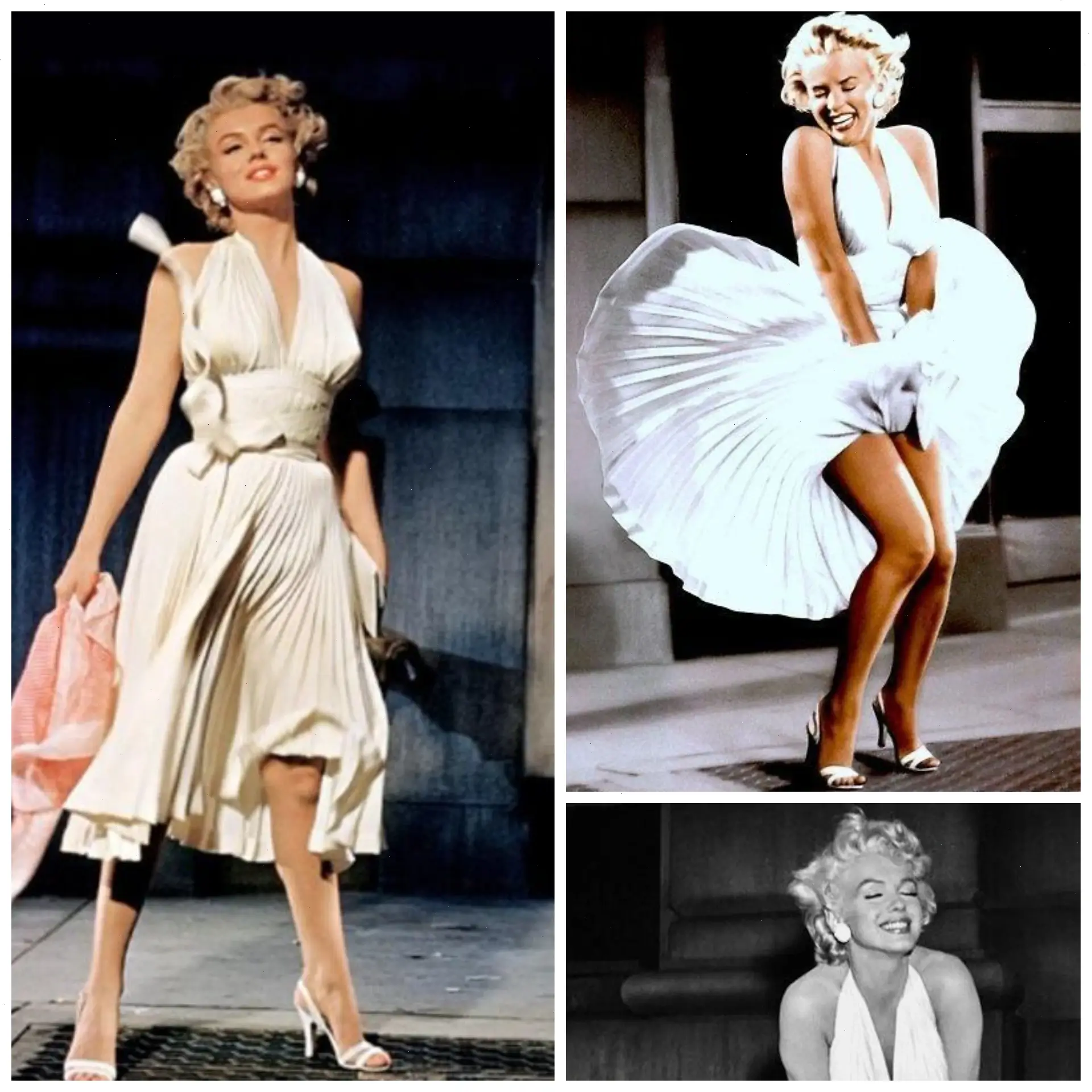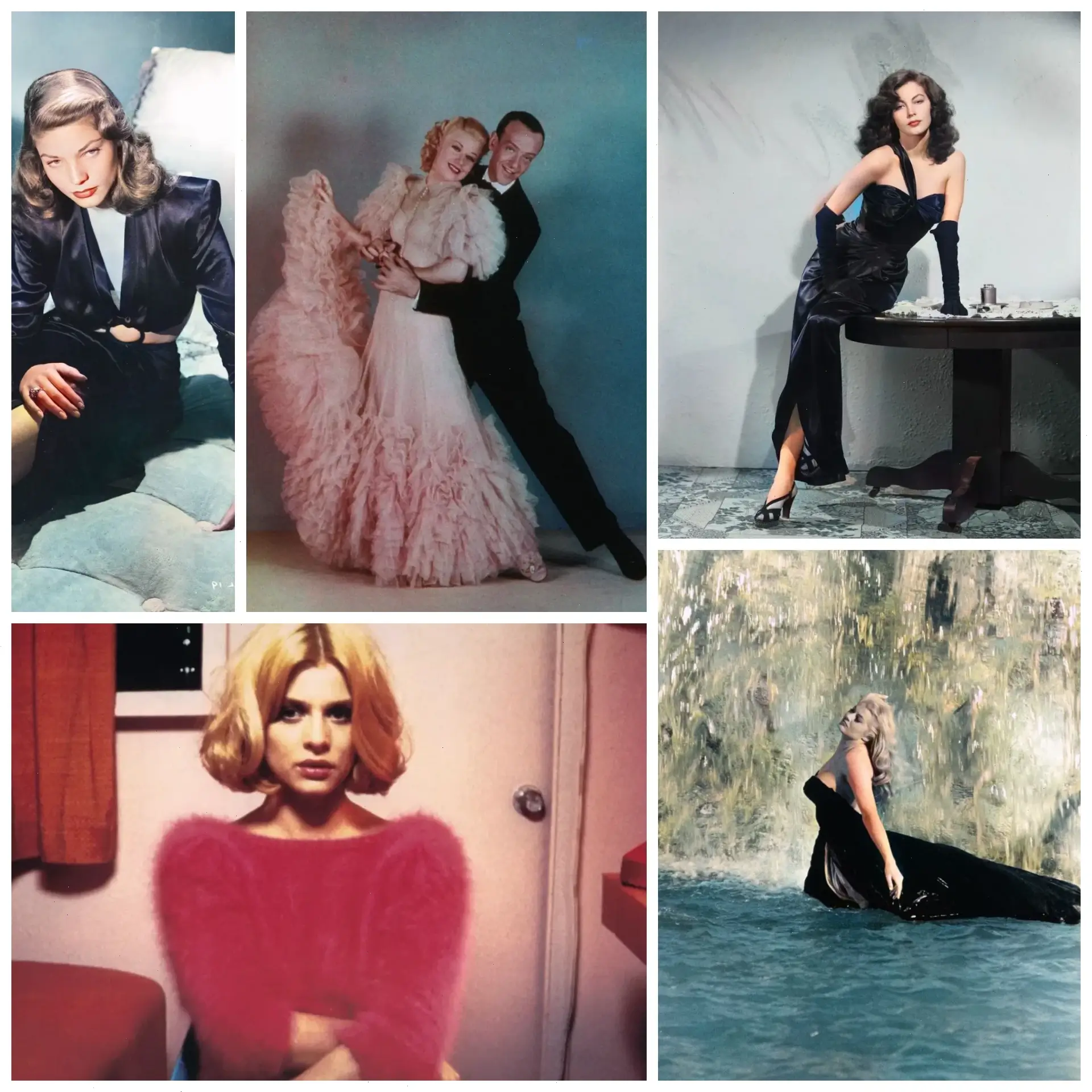September, New York, 1954. Picture this: a noisy evening, the air still warm, a crowd of onlookers, the flash of cameras — and her. Marilyn Monroe, all in white, steps onto a subway grate, and suddenly — a gust of wind. The skirt of her dress flies up, and she laughs, pressing it down with her hands. That’s it. The moment is captured. History is written.
This image isn’t just a photograph — it’s a visual password of an era. One glance and you instantly know what it is. No caption needed. No explanation required.
Where Did the Dress Come From?
It was created by William Travilla — a costume designer with impeccable intuition. The dress was ivory-colored, backless, with a deep V-neck and a light, pleated halter skirt. At first glance, it looked like a charming little evening dress. But when the wind began to blow… it came alive.
Delicate and almost weightless, it seemed to dance on its own. It was made from acetate silk — a fashionable material at the time, prized for its ability to reflect light and hold its shape. The dress was literally designed for the camera.
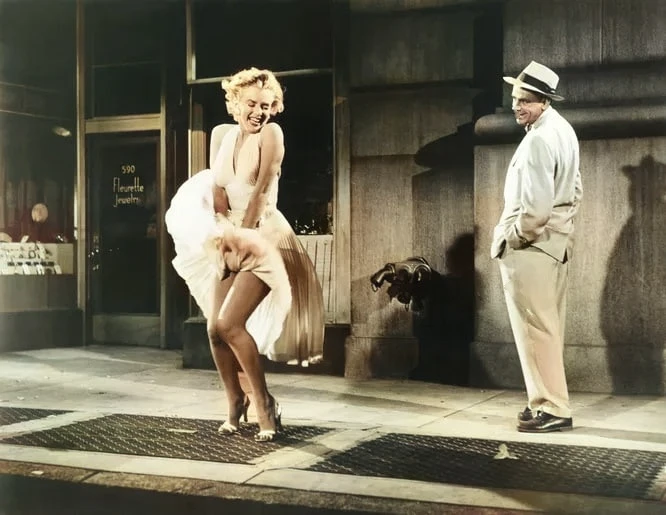
The Shoot That Became a Myth
Here’s the fascinating part: that iconic scene wasn’t shot in a studio. It happened right there on a real New York street, with a cheering, screaming crowd. Monroe stood over the subway grate, the wind lifted her skirt, and dozens of cameras captured every second.
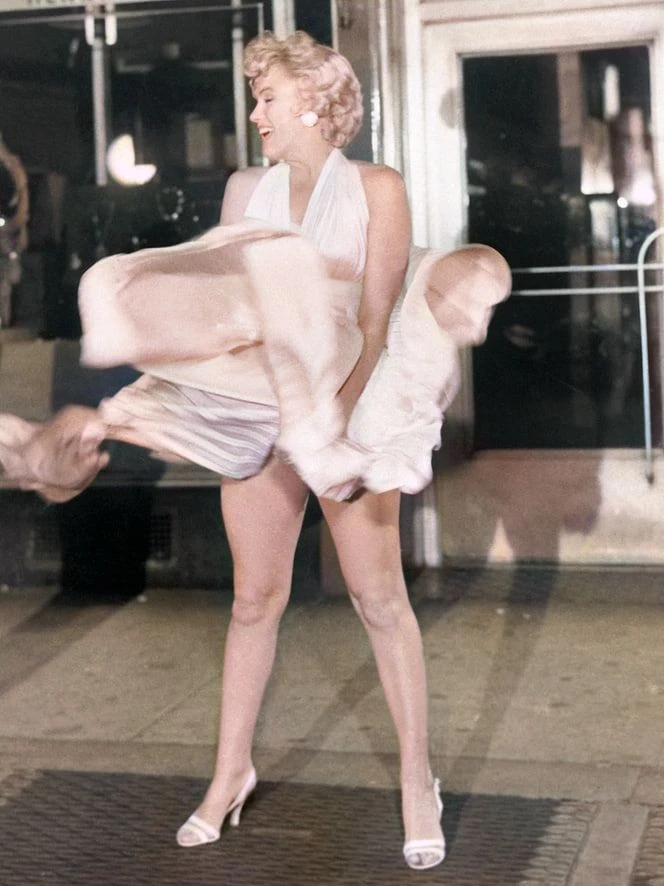
The version that made it into the film was later reshot in a studio — clean, composed, controlled. But it was the street photos that became legendary. They had life, electricity — something raw and utterly real.
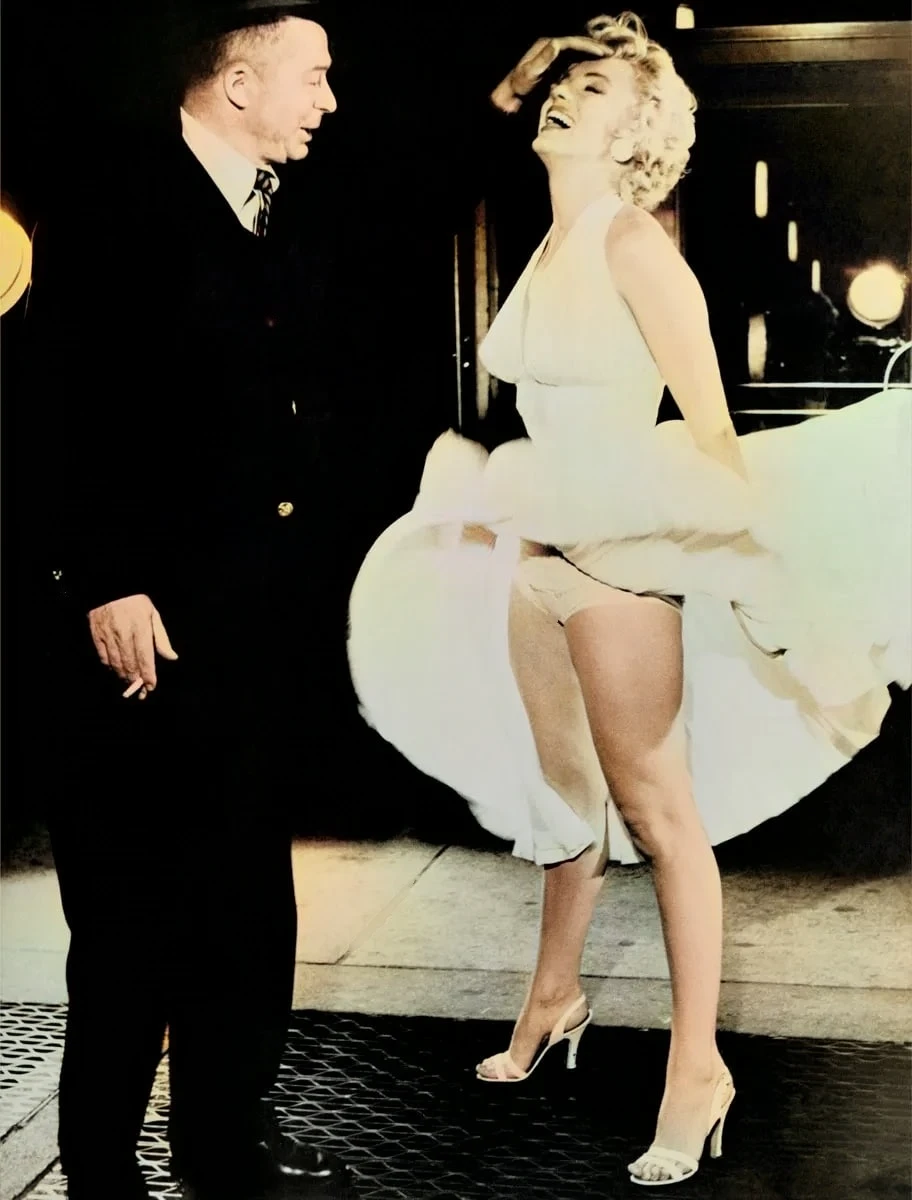
Why the Dress Is More Than Just a Dress
Because it changed the rules of femininity. Before that, sensuality was often portrayed through exposure. Here, there was nothing vulgar — just movement, form, and playfulness. The pleats, the open back, the halter cut — all of it became wildly popular and still echoes through fashion today.
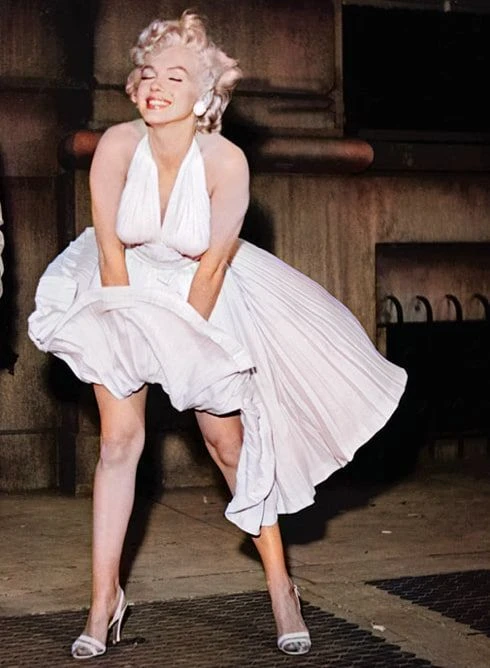
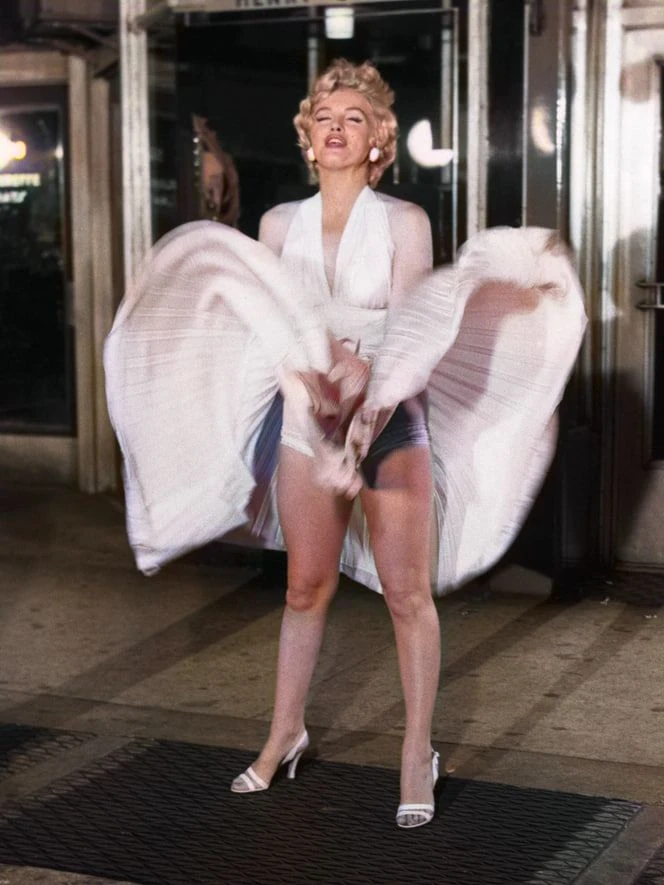
From Movie Set to Museum
Fun fact: in 2011, that very dress was sold at auction for $5.6 million. Imagine that. Today, it’s preserved as a museum artifact — not just a “celebrity item,” but a genuine cultural icon.
And experts still debate how to preserve its delicate pleats — designed for motion, not for storage.
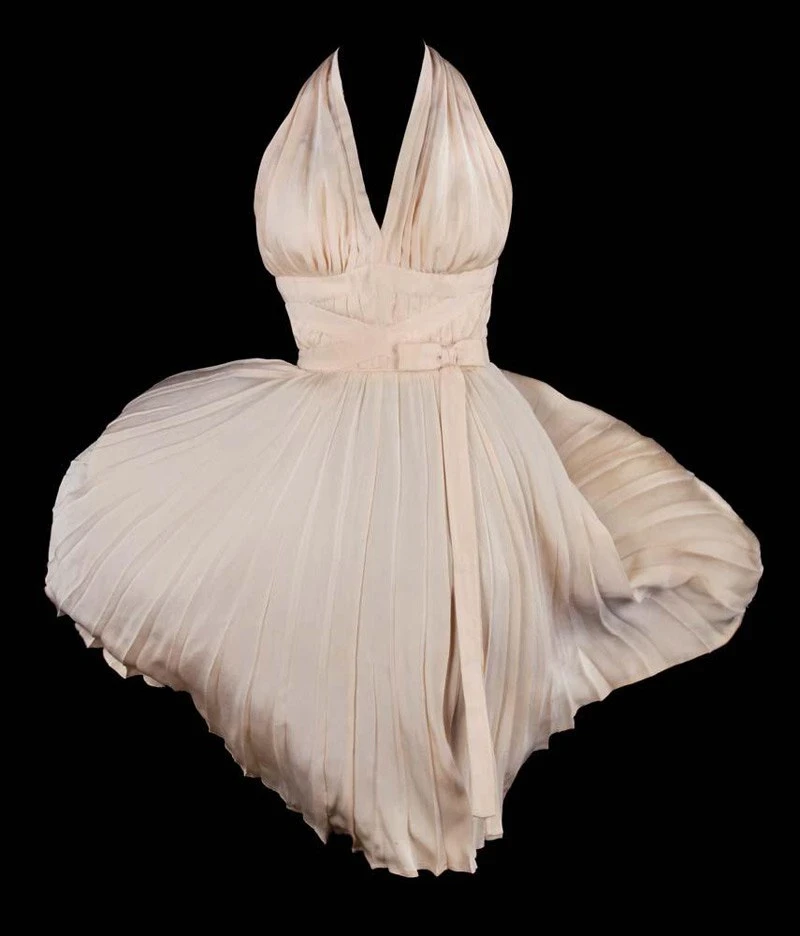
A Symbol Beyond Time
Marilyn’s dress isn’t about style — it’s about the feeling of a moment. That perfect alignment of fabric, light, and woman. A flash that never faded. It became part of our visual memory — part of history that refuses to age.
Sometimes, it only takes the flutter of a single skirt to rewrite an entire era.
